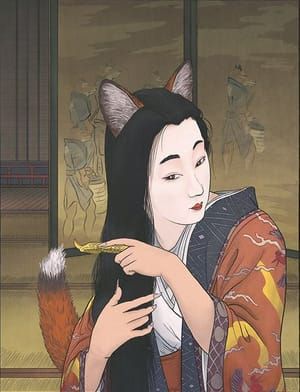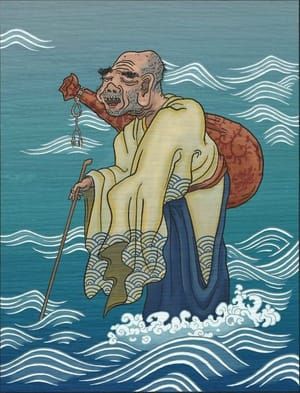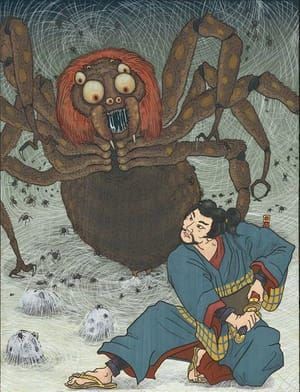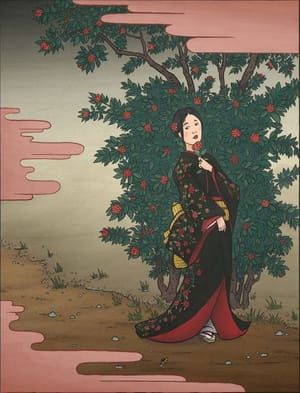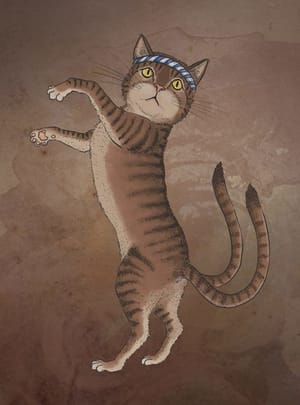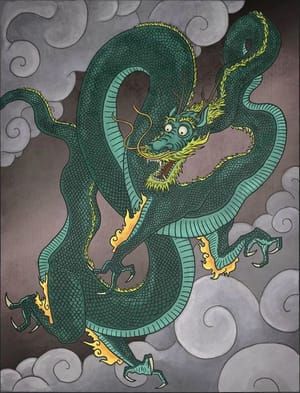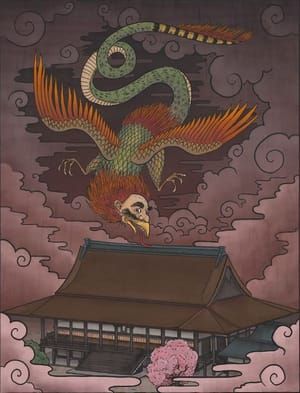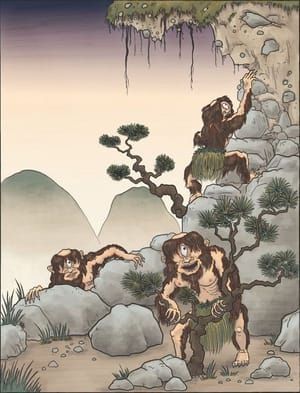
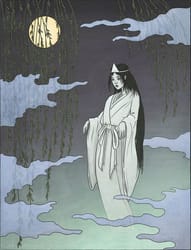
Yūrei
Matthew Meyer
幽霊
There are many different types of yūrei, and they differ in many ways depending on the circumstances on their death. In most cases, though, yūrei appear much like they did in their human life, retaining the features and the clothing they wore when they died or were buried. As such, yūrei are often seen wearing white burial kimonos or the uniforms of fallen warriors. Occasionally they have bloody wounds indicative of the way they died. Their hair is usually long and disheveled, often obstructing their face and adding to their disturbing appearance. Their hands hang limply from their wrists. They are translucent and only very faintly visible, and in most cases they are so faint that they appear to have no feet.
Yūrei interact with the living world in a wide range of ways, from creating phantom lights and sounds, to invoke powerful curses. They do not roam about, but they haunt one particular place or person. In the case of a place it is often where they died or are buried. In the case of a person it is often their killer, or sometimes their loved ones. Yūrei exist only to haunt, and they remain “stuck” in this world until they can be put to rest. This might require bringing their killers to justice, finding their lost body, or something as simple as passing on a message to a loved one. Some yūrei are so reluctant to accept their deaths that they haunt their living family, bringing misfortune and unhappiness for the rest of their family members’ lives.
Each haunting is as unique as the person it originated from. Only when its purpose for existing is fulfilled, or it is exorcised by a priest, is a yūrei able to pass on and be reunited with its ancestors – but the possibility that salvation exists is a glimmer of hope for those who are affected by a haunting.
According to traditional Japanese beliefs, when a person dies his soul lives on as a separate entity, passing on to a heavenly afterlife. This transition is accomplished through a number of funeral and post-funeral rites and prayers performed by their loved ones over many years. Through these rites, the soul is reunited with its ancestors and becomes a family guardian spirit. These ancestors are enshrined in the house and continue to be honored as members of the family, particularly during the summer holiday of Obon, when they are said to return to the material world to be with their families.
Those who do not receive the proper funeral rites cannot pass on, and remain stuck in a purgatory that is part physical world and part ethereal. Others who die suddenly, tragically, violently, or with grudge and malice in their hearts are sometimes unable to pass on even with the proper prayers and rites. These “lost” souls are the ones that transform into ghosts.
Matthew Meyer
artistArthur
Wait what?

